A perfectly styled living room can be instantly ruined by one thing: a messy tangle of TV cords. These cluttered cables not only look bad but can also be a dusty nuisance and a safety hazard.
Fortunately, achieving a clean, professional-looking entertainment center is easier than you think. In this guide, we'll show you seven clever techniques for concealing TV cords, with specific solutions for whether your TV is on a stand or mounted to the wall.
How to Hide Cords for a TV on a Stand
If your TV sits on a media console, your main goal is to organize the wires behind and around the furniture. Here are the best tricks.
Trick 1: Bundle with Cord Clips & Ties
This is the simplest first step. Use clear, self-adhesive cord clips to trace a path along the back edge or down the legs of your TV stand. Group similar cables (e.g., power, HDMI) together with velcro cord ties, then press the neat bundle into the clips. This prevents the "spaghetti" effect and keeps everything tidy.
Trick 2: Use a Cable Management Box
For the bulky power strip and all its plugs, a cable management box is your best friend. Simply place the power strip inside the box, plug everything in, and close the lid. This instantly transforms a messy clump of adapters and plugs into a single, neat box that can sit discreetly behind your TV stand or on a lower shelf.
Trick 3: Get Creative with Decorative Elements
Use your decor to your advantage. Strategically place a tall potted plant, a stack of hardcover books, or a beautiful vase on your TV stand to block the view of any exposed wires. This method adds personality while cleverly solving the clutter problem.

How to Hide Cords for a Wall-Mounted TV
Hiding the dangling cords from a wall-mounted TV is the key to achieving that clean, floating look.
Trick 4: Use a Paintable Cord Raceway
A cord raceway (or cord cover) is a plastic channel that sticks directly to your wall. You run the cables inside it, and it provides a neat, straight path from your TV down to the outlet or your console. For a nearly invisible look, you can easily paint the raceway the same color as your wall.
Trick 5: Install an In-Wall Kit for a Professional Finish
For the cleanest possible look, an in-wall power and cable management kit allows you to safely run your TV's wires behind the drywall. While it requires cutting two small holes in the wall, the result is a truly professional, completely wire-free appearance.

The Ultimate & Easiest Solution: A TV Stand Designed for Cable Management
While the tricks above are excellent for tidying up an existing setup, the single best way to guarantee a clutter-free entertainment center is to start with furniture that's designed to solve the problem.
At Belleze, we know that cable management is not an afterthought—it's essential. That’s why the majority of our TV stands have excellent, built-in cable management features.

What to Look For in a Belleze TV Stand:
- Generous Cable Management Cutouts: All our stands feature large, pre-drilled holes in the back panel. These allow you to easily route all your cords through, keeping them completely hidden from view.
- Enclosed Cabinets & Drawers: Models with solid doors or drawers are perfect for hiding not just cords, but entire power strips, cable boxes, and gaming consoles, creating the ultimate clean aesthetic.
- Smart Design: Features like open shelving for heat dissipation and solid back panels ensure your setup is both organized and functional.
To Sum Up
Hiding the cords behind your TV stand doesn't have to be complicated. Whether you use simple clips and ties or opt for a perfectly designed media console, a clean and organized entertainment space is within your reach.
A tidy setup not only looks better, but it's also safer. By keeping cords managed, you create a more secure environment for your home.
Continue Your Journey to a Perfect Living Room:
- Now that your cords are hidden, what do you put under your wall-mounted TV? Read our guide: What to Put under a Mounted TV?
- Is your TV area safe for little ones? Learn more in our article: How To Baby-Proof A TV Stand.


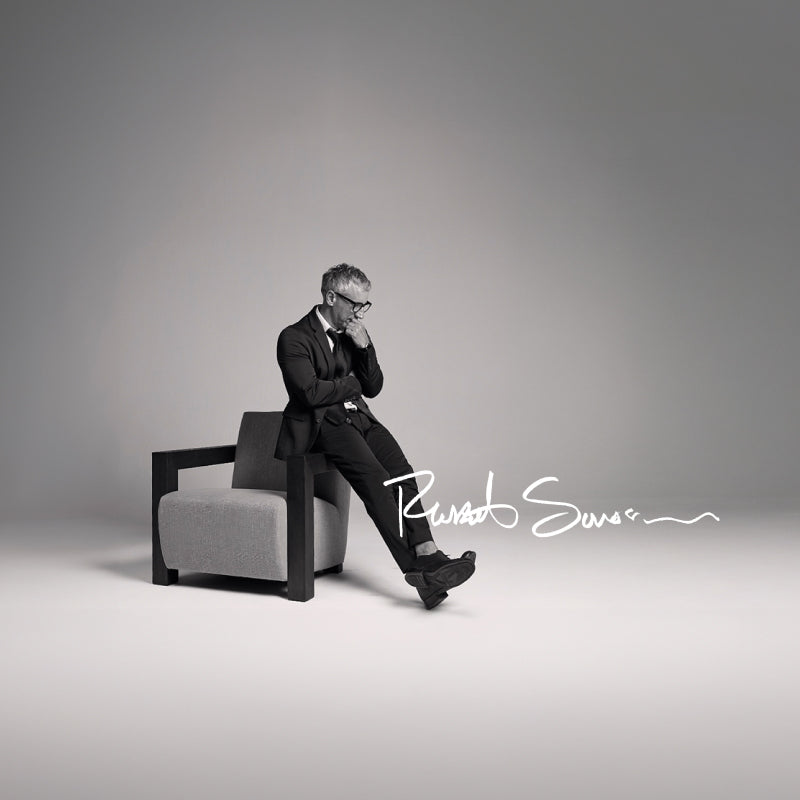
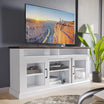






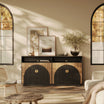
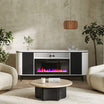
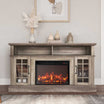
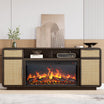
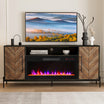
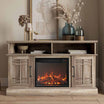
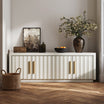
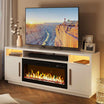
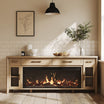
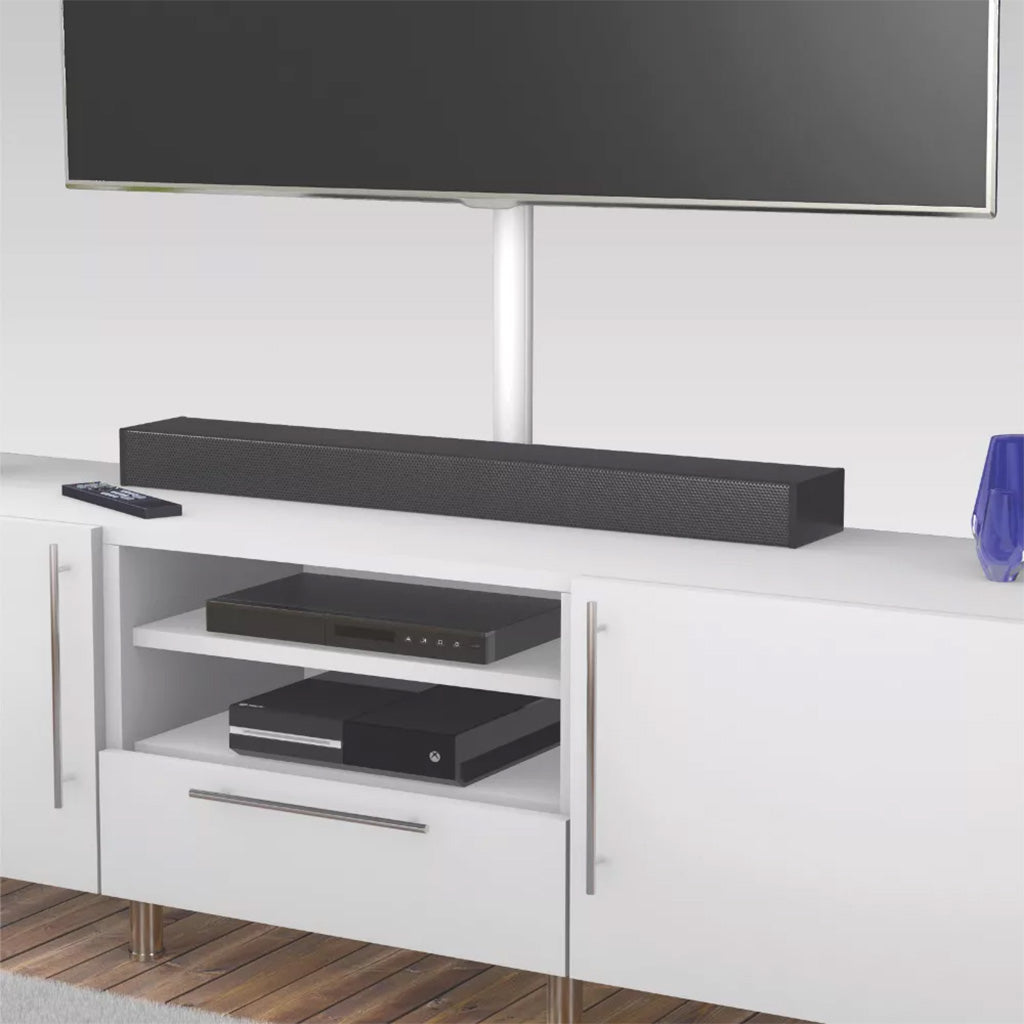
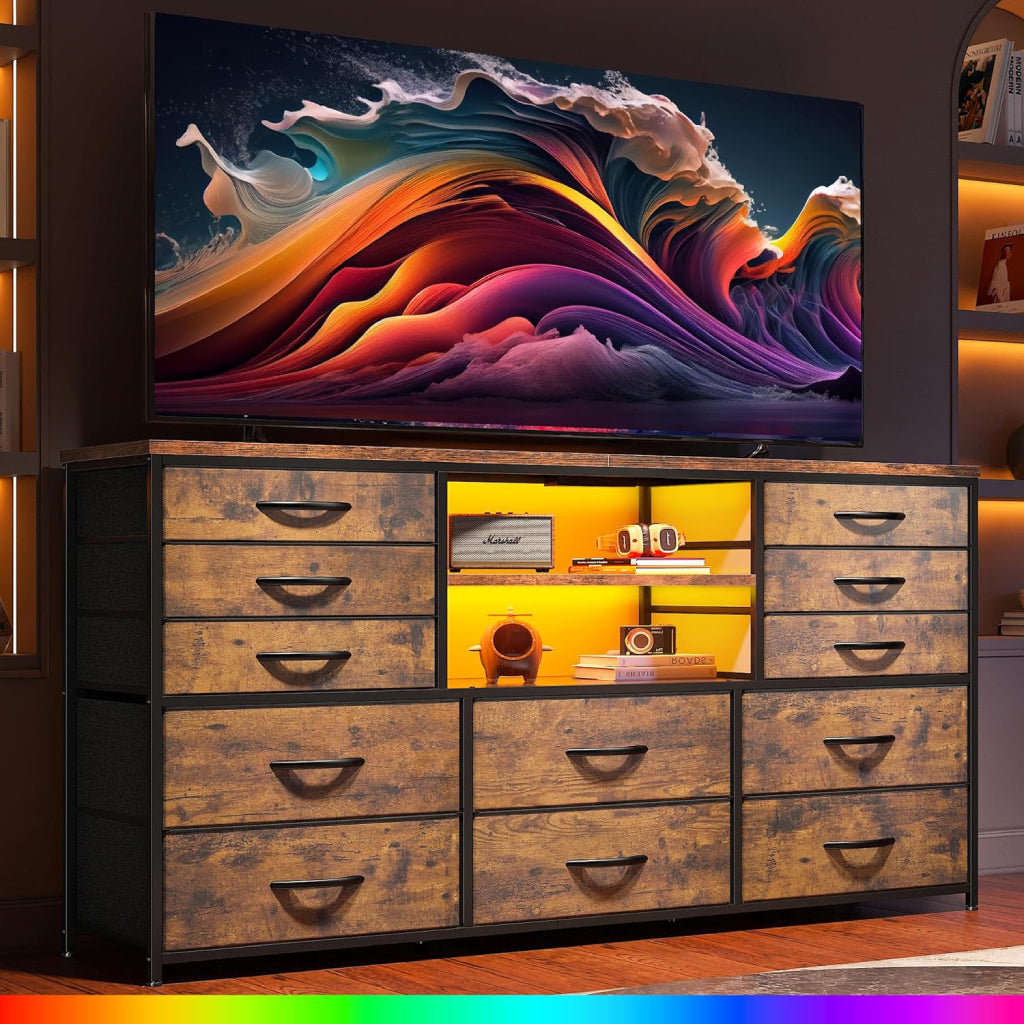

Leave a comment
This site is protected by hCaptcha and the hCaptcha Privacy Policy and Terms of Service apply.